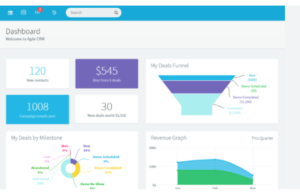Introduction
Customer Relationship Management (CRM) systems have become integral tools for businesses of all sizes, helping them manage customer interactions, streamline processes, and drive growth. However, one of the critical considerations when choosing a CRM solution is the pricing model. CRM pricing models can vary significantly, and selecting the right one is essential for optimizing your CRM investment. In this article, we’ll delve into different CRM pricing models, their advantages, disadvantages, and how to choose the best fit for your business.
Understanding CRM Pricing Models
What Are CRM Pricing Models?
CRM pricing models define how businesses pay for their CRM software and services. These models can vary in terms of cost structure, flexibility, and features included. Here are some common CRM pricing models:
1. Subscription-Based Pricing
H2: Subscription-Based Pricing
Subscription-based pricing is one of the most common CRM pricing models. It involves paying a recurring fee (typically monthly or annually) to use the CRM software. The subscription fee often includes access to updates, customer support, and cloud hosting.
Advantages of Subscription-Based Pricing:
- Predictable Costs: Businesses can budget accurately with fixed monthly or annual expenses.
- Access to Updates: Subscribers receive regular software updates, ensuring access to the latest features and security patches.
- Scalability: Many subscription-based CRM systems offer tiered pricing, allowing businesses to scale their subscription as they grow.
Disadvantages of Subscription-Based Pricing:
- Cumulative Costs: Over time, subscription fees can add up, potentially surpassing the cost of one-time purchase models.
- Vendor Lock-In: Switching CRM providers can be challenging due to data migration and contract commitments.
2. Per-User Pricing
H2: Per-User Pricing
Per-user pricing charges businesses based on the number of users who access the CRM system. Each user account incurs a separate fee, making it easy to scale costs according to the size of the team.
Advantages of Per-User Pricing:
- Cost Control: Businesses only pay for the number of users they need, making it cost-effective for small teams or businesses with fluctuating staff sizes.
- Transparency: Costs are directly tied to usage, providing clarity in budgeting.
Disadvantages of Per-User Pricing:
- Costs Can Escalate: As the number of users increases, so does the overall cost.
- Limited Scalability: Scaling up rapidly can lead to unexpected cost increases.
3. Tiered Pricing
H2: Tiered Pricing
Tiered pricing models offer different levels of CRM functionality at various price points. Typically, higher-tier plans include advanced features and capabilities.
Advantages of Tiered Pricing:
- Flexibility: Businesses can choose a plan that aligns with their specific needs and budget.
- Scalability: The ability to upgrade to higher tiers as the business grows.
Disadvantages of Tiered Pricing:
- Feature Limitations: Lower-tier plans may lack essential features, limiting functionality for some businesses.
- Cost Ambiguity: Costs can vary widely depending on the selected plan and any add-ons or customizations.
4. Pay-As-You-Go Pricing
H2: Pay-As-You-Go Pricing
Pay-as-you-go pricing models charge businesses based on their actual usage of the CRM system. This often involves per-transaction or per-action fees.
Advantages of Pay-As-You-Go Pricing:
- Cost Efficiency: Businesses only pay for what they use, making it suitable for those with variable usage patterns.
- No Upfront Costs: There are typically no upfront licensing fees, reducing initial investment.
Disadvantages of Pay-As-You-Go Pricing:
- Complex Cost Tracking: Tracking and managing usage costs can become challenging as the business scales.
- Cost Uncertainty: Usage-based pricing can lead to unpredictable expenses.
Choosing the Right CRM Pricing Model
H2: Choosing the Right CRM Pricing Model
Selecting the right CRM pricing model requires careful consideration of your business’s unique needs, budget, and growth projections. Here’s a step-by-step guide to help you make an informed decision:
1. Assess Your Needs
Start by assessing your business’s CRM requirements. Consider factors such as the number of users, desired features, and scalability. Are you a small team looking for basic CRM capabilities, or do you require an enterprise-grade solution with advanced features?
2. Budget Analysis
Examine your budget constraints. Calculate the total cost of ownership over a specific period (e.g., a year) for each pricing model you’re considering. This should include not only subscription or licensing fees but also any additional costs like customization, integration, and training.
3. Scalability
Evaluate your growth projections. Consider how each pricing model accommodates your business’s potential expansion. Will you easily scale up or down as your needs change?
4. Features and Customization
Review the features offered by each CRM pricing model. Ensure that the chosen model aligns with your required functionality. If customization is crucial, inquire about the flexibility of the pricing model to accommodate tailored solutions.
5. Data Security and Support
Examine data security measures and customer support options provided by the CRM provider. Data security is critical, especially if you handle sensitive customer information. Reliable customer support can be essential for resolving issues promptly.
6. Contract Terms
Carefully read and understand the contract terms associated with each pricing model. Pay attention to cancellation policies, data migration options, and any hidden fees.
7. User Feedback and References
Research user reviews and seek references from businesses that have used the CRM system and pricing model you’re considering. Real-world experiences can provide valuable insights.
Conclusion
Choosing the right CRM pricing model is a critical decision that can impact your business’s efficiency, budget, and growth. Each model has its advantages and disadvantages, so there’s no one-size-fits-all solution. By carefully assessing your business’s needs, budget, and scalability requirements, you can make an informed choice that ensures your CRM investment aligns with your long-term objectives. Remember that flexibility and the ability to adapt to changing circumstances are key when selecting the ideal CRM pricing model for your business.
